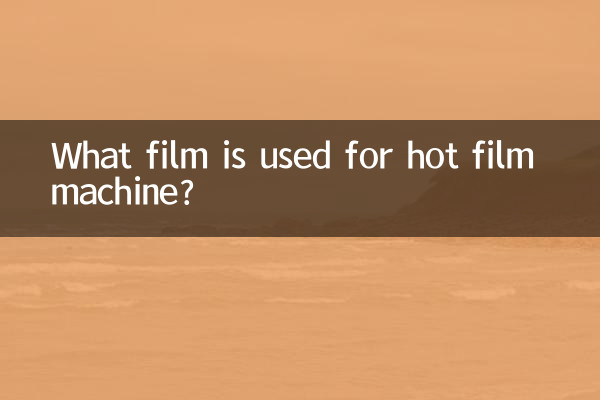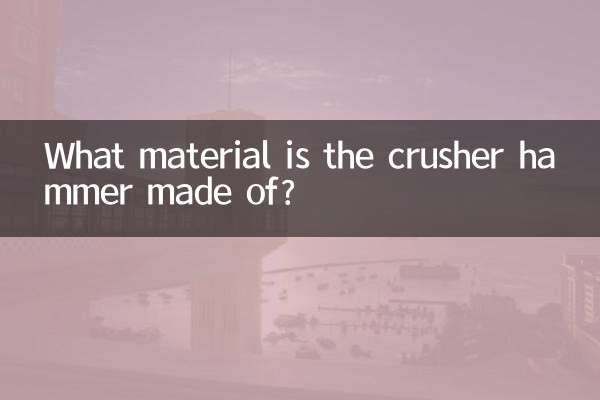What kind of film does the hot film machine use? Analysis of hot topics across the Internet and purchasing guide
Recently, hot film machines and supporting film materials have become the focus of heated discussions across the Internet, especially in the fields of industrial manufacturing, advertising printing and DIY handicrafts. This article will combine the hot content of the past 10 days to analyze the film material selection for hot film machines and provide structured data reference.
1. Comparison of common film material types and characteristics of hot film machines

| Membrane material type | Applicable temperature | Main purpose | Price range (yuan/㎡) |
|---|---|---|---|
| PVC heat shrink film | 120-160℃ | Food packaging, daily necessities packaging | 2-8 |
| POF environmentally friendly film | 140-180℃ | High-end product packaging | 5-15 |
| PET high temperature film | 180-220℃ | Industrial equipment protection | 10-25 |
| PP synthetic paper film | 130-170℃ | Advertising film | 8-20 |
2. Analysis of recent popular membrane material application scenarios
According to Internet search data, the three application scenarios that have received the most attention in the past 10 days are:
| Ranking | Application scenarios | heat index | Recommended membrane materials |
|---|---|---|---|
| 1 | Electronic product packaging | 8.7 | Anti-static PE film |
| 2 | Handmade DIY lamination | 7.9 | Low temperature BOPP film |
| 3 | Furniture surface protection | 6.5 | Wear-resistant PET film |
3. Five key points when purchasing special films for hot film machines
1.Temperature matching: It is necessary to ensure that the temperature range of the film material withstands includes the operating temperature of the hot film machine, otherwise melting or poor fit will occur.
2.Substrate compatibility: It is recommended to use PP synthetic film for paper materials, PET material for metal surfaces, and PVC film for plastic products.
3.Environmental protection standards: Food-grade packaging needs to pass FDA certification, and export products should meet REACH regulatory requirements.
4.Thickness selection: Use 25-50μm for conventional packaging, 75-120μm for heavy-duty protection, and 12-20μm for ultra-thin applications.
5.special features: Select special functional membrane materials such as UV protection, scratch resistance, matte/glossy surface according to needs.
4. New membrane material technology trends in 2023
| Technical name | Core advantages | Representative manufacturer | Commercialization progress |
|---|---|---|---|
| nano coating film | Self-healing scratches | 3M, DuPont | Already in mass production |
| biodegradable film | Decomposes naturally in 6 months | BASF | pilot stage |
| Intelligent temperature control film | Automatically adjust shrinkage rate | Toray Chemical | laboratory stage |
5. Expert usage suggestions
1. When using a new membrane material for the first time, it is recommended to conduct a sample test and record the temperature, pressure and speed parameters.
2. Different batches of membrane materials may have performance differences, and the equipment needs to be recalibrated before large-scale use.
3. The storage environment should be kept dry and away from light. The shelf life of most membrane materials is 6-12 months.
4. Composite membrane materials require professional cutting equipment, and self-cutting may cause edge delamination.
5. Clean the rollers of the hot film machine regularly. Film material residues will affect subsequent lamination quality.
From the above analysis, it can be seen that the selection of film materials for hot film machines requires comprehensive consideration of material characteristics, application scenarios and equipment parameters. It is recommended that users make scientific decisions based on specific needs and refer to the latest market data.

check the details

check the details